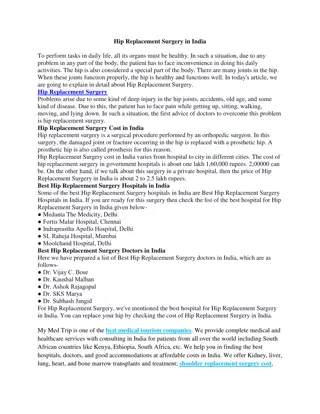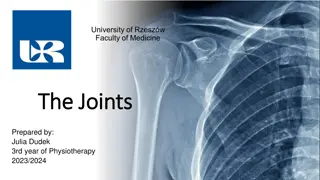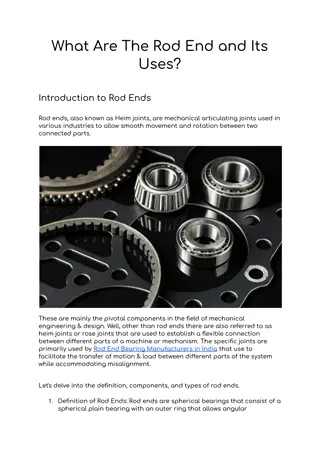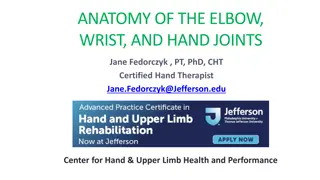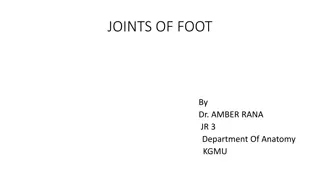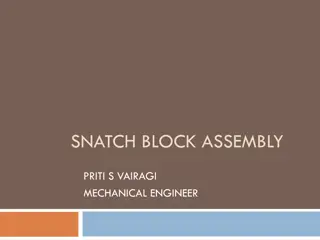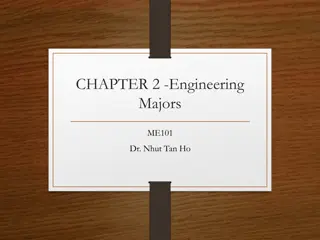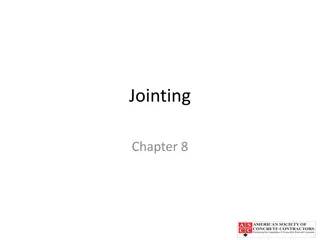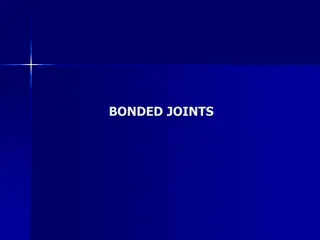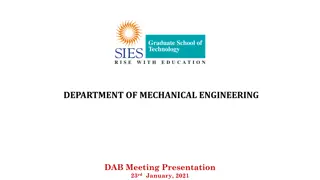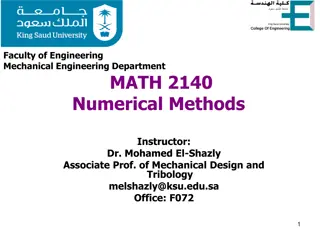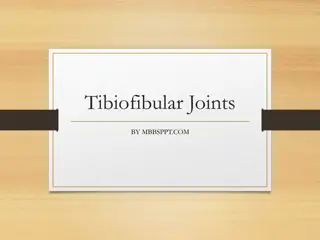Understanding Cotter Joints in Mechanical Engineering
Explore the applications, design criteria, and failure modes associated with cotter joints in mechanical systems. Learn about the design procedure, thickness determination, and various types of cotter joints. Discover how cotter joints play a crucial role in connecting components in machinery, ensuring efficient operation and safety.
Download Presentation

Please find below an Image/Link to download the presentation.
The content on the website is provided AS IS for your information and personal use only. It may not be sold, licensed, or shared on other websites without obtaining consent from the author. Download presentation by click this link. If you encounter any issues during the download, it is possible that the publisher has removed the file from their server.
E N D
Presentation Transcript
Visit for more Learning Resources Visit for more Learning Resources
Course Outcome C604.1: Analyze and evaluate the loads, forces, stresses involved in components and decide the dimensions. C604.2: Select design criteria for different machine components. C604.3: Select proper material for machine components. C604.4: Identify various modes of failure of machine components under different load patterns.
Cotter It is a flat wedge shape piece of rectangular cross section and width is tapered (either on both side or in one side) from one end to another for an easy adjustment. Taper varries from 1 in 48 to 1 in 24 and it may be increased to 1 in 8, if locking is provided.
Apllications Joint between the piston rod and the crosshead of steam engine. Joint between the slide spindle and the fork of the valve mechanism. Joint between the piston rod and the tail or pump rod. Foundation bolt.
LEVERS A lever is a rigid rod or bar capable of turning about a fixed point called fulcrum. It is used as a machine to lift a load by the application of a small effort. The ratio of load lifted to the effort applied is called mechanical advantage. The perpendicular distance between the load point and fulcrum (l1) is known as load arm and the perpendicular distance between the effort point and fulcrum (l2) is called effort arm. According to the principle of moments, The ratio of the effort arm to the load arm i.e. l2 / l1 is called leverage.
In the first type of levers, the fulcrum is in between the load and effort. In this case, the effort arm is greater than load arm, therefore mechanical advantage obtained is more than one. Such type of levers are commonly found in bell cranked levers used in railway signaling arrangement, rocker arm in internal combustion engines, handle of a hand pump, hand wheel of a punching press, beam of a balance, foot lever etc.
In the second type of levers, the load is in between the fulcrum and effort. In this case, the effort arm is more than load arm, therefore the mechanical advantage is more than one. The application of such type of levers is found in levers of loaded safety valves.
In the third type of levers, the effort is in between the fulcrum and load. Since the effort arm, in this case, is less than the load arm, therefore the mechanical advantage is less that one. The use of such type of levers is not recommended in engineering practice. However a pair of tongs, the treadle of a sewing machine etc. are examples of this type of lever.
The load W and the effort P may be applied to the lever in three different ways the mechanical advantage is less that one mechanical advantage obtained is more than one. the mechanical advantage is more than one
1. The diameter of the shaft ( d ) is obtained by considering the shaft under pure torsion. We know that twisting moment on the shaft, A hand lever with suitable dimensions and proportions is shown in Fig. Let P = Force applied at the handle, L = Effective length of the lever, t = Permissible tensile stress, and = Permissible shear stress. From this relation, the diameter of the shaft ( d ) may be obtained.
2. The diameter of the boss (d2) is taken as 1.6 d and thickness of the boss (t2) as 0.3 d. 3. The length of the boss (l2) may be taken from d to 1.25 d. It may be checked for a trial thickness t2 by taking moments about the axis. Equating the twisting moment (P L) to the moment of resistance to tearing parallel to the axis, we get 5. The key for the shaft is designed as usual for transmitting a torque of P L. Let, w = Width of the key t = Thickness of the key lb = Length of the key / Length of the boss. For rectangular key , w= d/4 t = 2w/3 For square key, w =t= d/4 4. The diameter of the shaft at the centre of the bearing (d1) is obtained by considering the shaft in combined bending and twisting. We know that bending moment on the shaft, M = P l and twisting moment, T = P L 1) T = lb . W. (d/2) x Key under shear failure
First of all, let us find the effort (P) required to raise the load (W ). Taking moments about the fulcrum F, we have W x L = P x l Reaction at the fulcrum pin at F, 1. Design for fulcrum pin Let d = Diameter of the fulcrum pin, and l = Length of the fulcrum pin. Considering the fulcrum pin in bearing. We know that load on the fulcrum pin (RF), Rf = d x l x Pb
Let us now check for the shear stress induced in the fulcrum pin. Since the pin is in double shear, therefore load on the fulcrum pin (RF), Rf A brass bush of 3 mm thickness is pressed into the boss of fulcrum as a bearing so that the renewal become simple when wear occurs. Diameter of hole in the lever = d + 2 3 and diameter of boss at fulcrum= 2 d let us check the bending stress induced in the lever arm at the fulcrum. Bending moment at the fulcrum M = W FB Bending stress,
2. Design for pin at A Since the effort at A, is not very much different from the reaction at fulcrum, therefore the same dimensions for the pin and boss may be used as for fulcrum pin to reduce spares. Diameter of pin at A = d Length of pin at A = l and diameter of boss at A = diameter of boss at fulcrum 3. Design for pin at B Let d1 = Diameter of the pin at B, and l1 = Length of the pin at B. Considering the bearing of the pin at B. We know that load on the pin at B (W ), W = d1 l1 pb Let us now check for the shear stress induced in the pin at B. Since the pin is in double shear,therefore load on the pin at B (W ), W 4. Design of lever It is assumed that the lever extends upto the centre of the fulcrum from the point of application of the load. This assumption is commonly made and results in a slightly stronger section. Considering the weakest section of failure at Y-Y. Let t = Thickness of the lever at Y-Y, and b = Width or depth of the lever at Y-Y. Taking distance from the centre of the fulcrum to Y-Y therefore maximum bending moment at Y-Y,
Let t = Thickness of the lever at Y-Y, and b = Width or depth of the lever at Y-Y. Taking distance from the centre of the fulcrum to Y-Y therefore maximum bending moment at Y-Y, = W x( lw Db/2) We know that the bending stress ( b), For more detail contact us For more detail contact us




